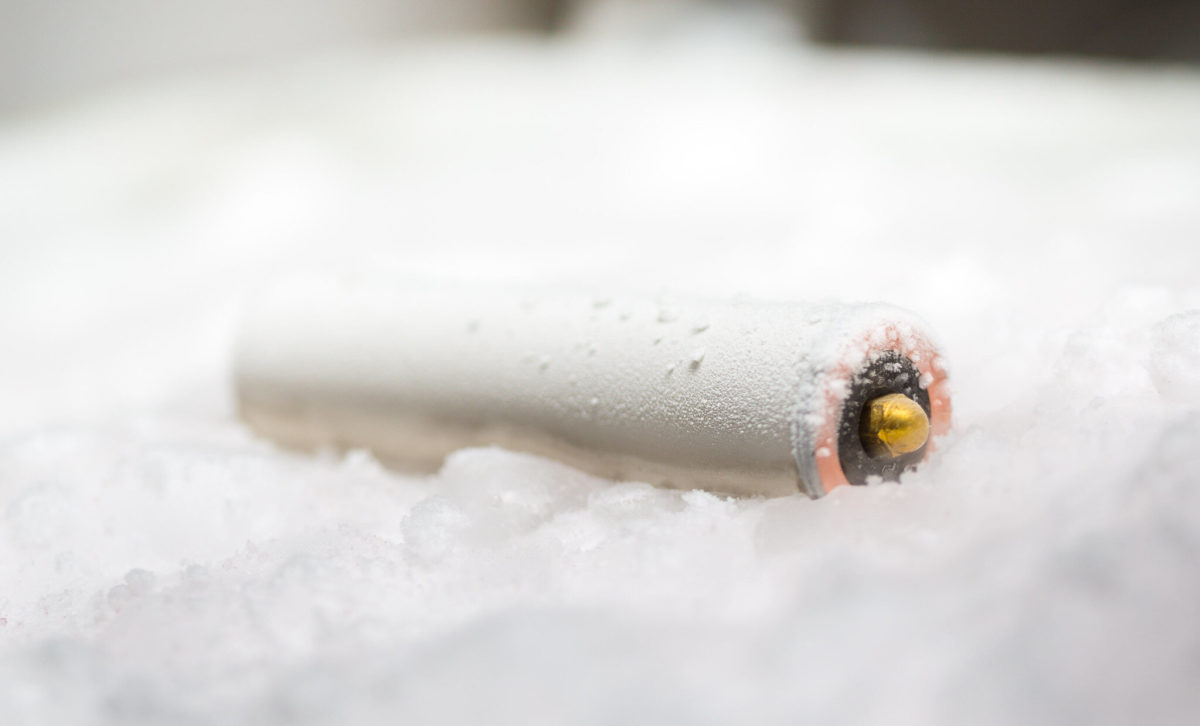Of the many approaches to meeting demand for new, advanced energy storage technologies, lithium metal anodes are among the most promising. Lithium metal has several times the storage capacity of commonly used graphite and could allow for the development of much larger battery capacities.
However, it is a difficult material to work with. With most available liquid electrolytes it tends to form dendrites – branch like structures growing out the anode that threaten both performance and safety. Many see solid-state electrolytes as the only solution to safely integrate lithium metal anodes. Researchers, however, continue to investigate other possibilities.
A group led by Penn State University in the U.S. has found that by depositing an additional layer onto the surface of the anode, which serves to protect the lithium and prevent dendrites from forming. The active layer is deposited onto thin copper and comprises a a lithium fluoride-rich inner phase and amorphous outer layer.
The work integrating this layer into a battery is described in the paper Low-temperature and high-rate-charging lithium metal batteries enabled by a chemically active monolayer regulated interface, published in Nature Energy. “The key is to tune the molecular chemistry to self-assemble on the surface,” said Donghai Wang, professor of mechanical engineering at Penn State’s Battery and Energy Storage Technology Center. “The monolayer will provide a good solid electrolyte interface when charging, and protect the lithium anode.”
A battery incorporating the layer demonstrated a capacity of 2 milliamp hours per square centimeter, and a recharge time of 45 minutes at minus 15 degrees Celsius. And the layer was also shown to allow stable lithium deposition at temperatures as low as minus 60 degrees Celsius.
The battery, however, only remained stable for 200 cycles – a much shorter lifetime than would be needed to spark commercial interest. The group at Penn State, however, is convinced that this can be overcome and that its approach can be valuable in future energy storage applications.
“The key is that this technology shows an ability to form a layer when needed on time and decompose and spontaneously reform so it will stay on the copper and also cover the surface of the lithium,” said Wang. “Eventually it could be used for drones, cars, or some very small batteries used for underwater applications at low temperatures.”
This content is protected by copyright and may not be reused. If you want to cooperate with us and would like to reuse some of our content, please contact: editors@pv-magazine.com.




By submitting this form you agree to pv magazine using your data for the purposes of publishing your comment.
Your personal data will only be disclosed or otherwise transmitted to third parties for the purposes of spam filtering or if this is necessary for technical maintenance of the website. Any other transfer to third parties will not take place unless this is justified on the basis of applicable data protection regulations or if pv magazine is legally obliged to do so.
You may revoke this consent at any time with effect for the future, in which case your personal data will be deleted immediately. Otherwise, your data will be deleted if pv magazine has processed your request or the purpose of data storage is fulfilled.
Further information on data privacy can be found in our Data Protection Policy.